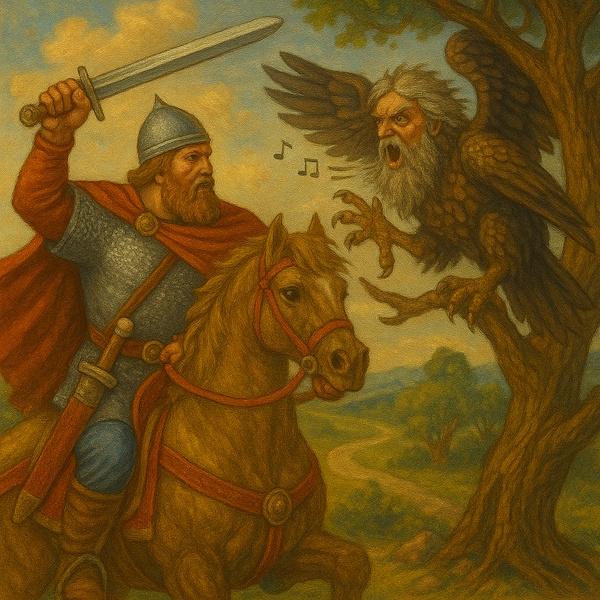
Ilya and Solovey
The Nightingale Robber
Story Details
- Type: Heroic Bylina
- Culture: Kievan Rus
- Similar to: Hercules and the Stymphalian Birds
- Main Figures: Ilya Muromets, Solovey Razboynik
- Themes: Civilization vs Wilderness
Key Elements
- Deadly whistle weapon
- Arrow shot to the eye
- Court demonstration
- 33 years of paralysis
- Christian symbolism
The Story
Ilya Muromets, the greatest of the bogatyrs, set out from his village to serve Prince Vladimir in Kiev. On his journey, he encountered the fearsome Nightingale Robber (Solovey Razboynik) who lived in a tree.
The robber could kill travelers with his powerful whistle. When Ilya approached, Solovey unleashed his deadly whistle, but Ilya shot an arrow that struck the robber's right eye and knocked him from his tree.
Ilya dragged the wounded robber to Kiev where he forced him to demonstrate his whistle for the court, destroying parts of the palace. The prince begged Ilya to execute Solovey, which he did.
Cultural Significance
This story represents the triumph of civilization (Ilya) over chaotic wilderness (Solovey). The Nightingale Robber may symbolize either literal bandits or the destructive forces of nature.
Ilya's journey from peasant to hero mirrors the Christianization of Rus' - he spends 33 years paralyzed before being healed by wandering monks, then dedicates his strength to defending the faith.
The tale was extremely popular in oral tradition and inspired numerous artistic works, including operas and paintings in the 19th century nationalist revival.